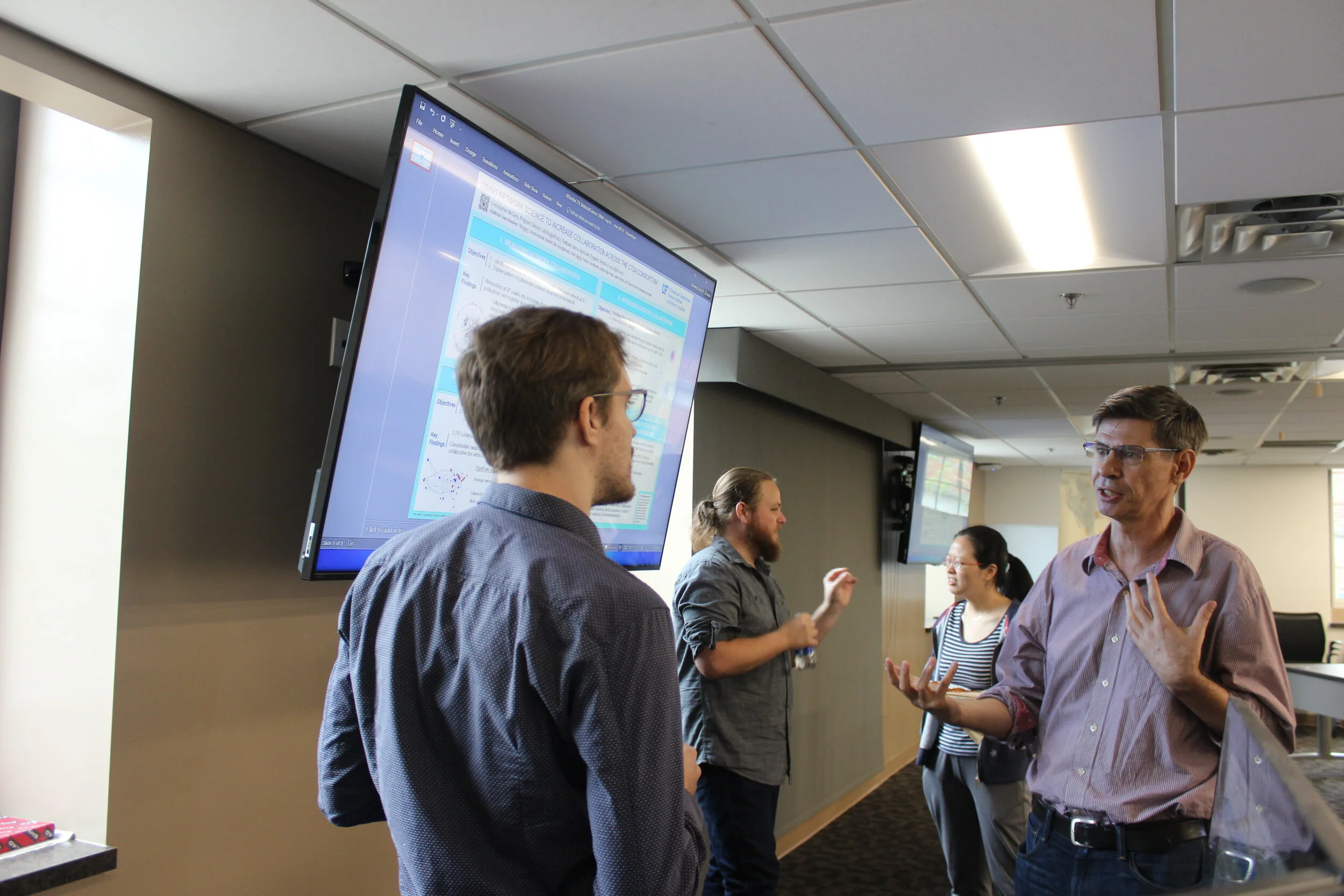Seminar Series: Dr. Till Krenz and Jared Adams
Last November 8, EFTI hosted a seminar titled “Context and Determinants of Cross-University Collaboration: Extracting and Analyzing Networks from Grant Acknowledgement Texts”. Dr. Till Krenz, Postdoctoral researcher at the UF Bureau of Economic and Business Research and Jared Adams, graduate student at the department of Sociology and Criminology & Law presented about a research project conducted for the Clinical and Translational Science Institute.
Their study analyzed research hubs of health departments established in universities around the US and the collaboration between these different hubs from different academic institutions. The main goal of these projects, supported by the NIH Clinical and Translational Science Awards (CTSAs), are not just simply the collaborations, but the results that are generated with this instead: faster translation of basic science into improved patient care and community health. In their study, they analyzed the motivations that drive individuals and institutions to collaborate, while considering factors that might influence these decisions such as funding, physical distance, culture of collaboration, public and private universities, etc.
Even though their research studies the health field, the implications of their findings can be translated to other areas in which research occurs, including the travel and tourism field. Results of the study show that hubs with similar funding are more likely to collaborate, and programs of similar size and faculty are more likely to work together.
Following the presentation, faculty and graduate students from the Tourism, Hospitality and Event Management department (THEM) engaged in dialogues with the presenters about ways to use this information in other industries such as the tourism field.
EFTI is a great advocate of collaborations and we believe in the importance of knowledge sharing. It was interesting to learn more about factors that influence research collaboration so we can improve the way and frequency we engage with other academic and industry organizations in the future.




